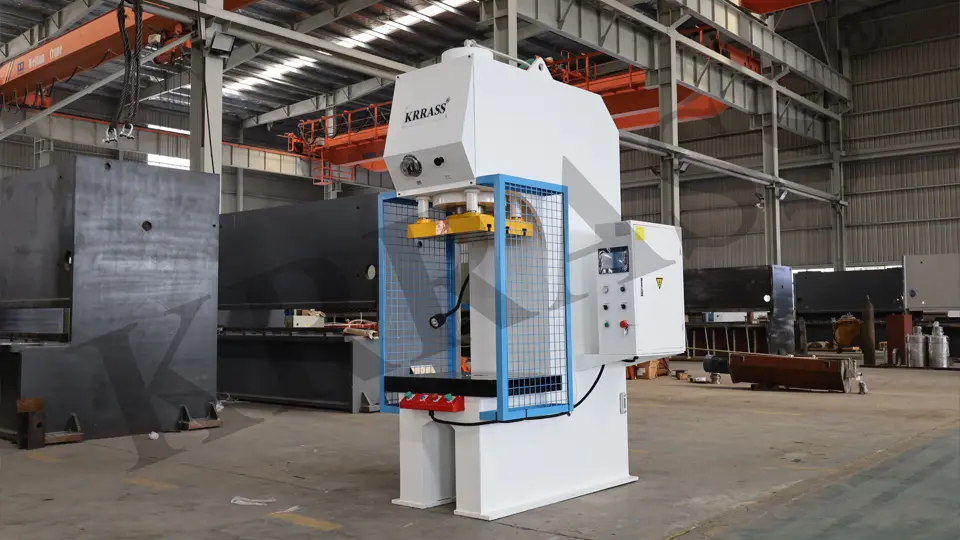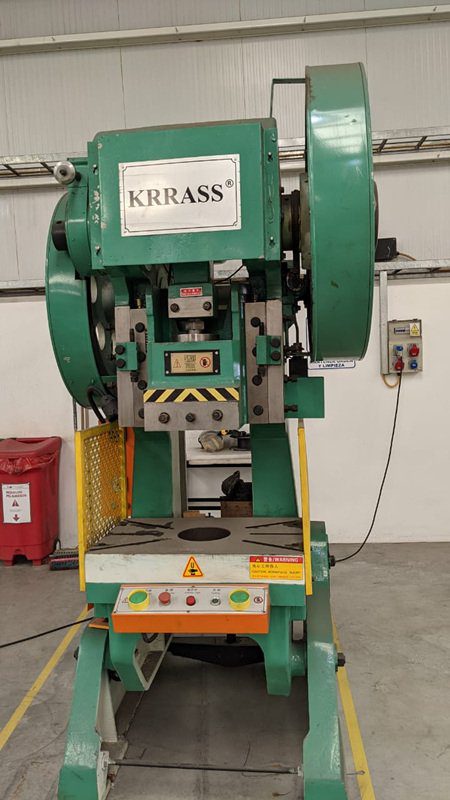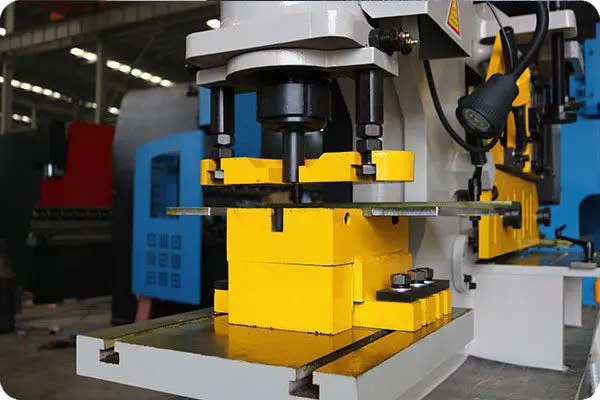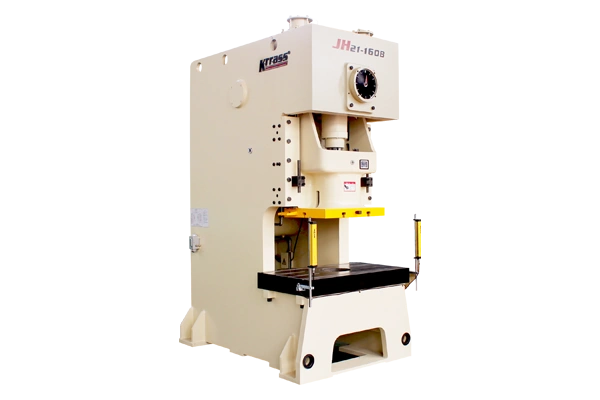Welcome to an insightful journey into the realm of hydraulic presses – the marvels of engineering that have revolutionized industrial processes with their unmatched strength and precision. Whether you're a seasoned professional or new to the field, understanding how strong a hydraulic press is, and the intricate workings behind these powerful machines, is key to leveraging their full potential. Join us as we delve into the fascinating world of hydraulic presses, exploring their components, applications, and the principles that make them a cornerstone in modern manufacturing and engineering.
- Overview of Hydraulic Presses
- Importance of Understanding Hydraulic Press Power
- Essential Components of a Hydraulic Press
- Measuring the Power of Hydraulic Presses
- Applications of Hydraulic Press Power
- The Physics Behind the Power
- Strengths and Limitations
- Hydraulic Press vs. Mechanical Press
- How to Choose a Hydraulic Press
Overview of Hydraulic Presses
Ever wondered how strong a hydraulic press really is? Let's dive into the world of these powerful machines. A hydraulic press is a device that uses a hydraulic cylinder to generate a compressive force. By using hydraulic fluid, which is typically oil, the press can deliver a consistent and controllable force, making it a staple in various industrial, manufacturing, and engineering settings.
The basic principle behind a hydraulic press is Pascal's Law, which states that when pressure is applied to a confined fluid, the pressure change occurs throughout the entire fluid. This allows for a small force applied to a small area to be transformed into a large force over a larger area. The result? A machine that can bend, shape, or cut materials with incredible force and precision.
Hydraulic presses come in various designs and capacities, ranging from small, hand-operated models to large, industrial-sized machines. They are essential for tasks such as metal forming, assembly, forging, and even in the manufacturing of cars and airplanes. Their power and versatility make them invaluable to modern industry, enabling the creation and manipulation of materials in ways that were once impossible.
At our company, we harness this power to provide solutions that meet the needs of today's businesses. Whether you're looking to press-fit parts, bend metal, or accomplish any number of industrial tasks, a hydraulic press is a tool you can rely on for efficiency, precision, and sheer strength.

Importance of Understanding Hydraulic Press Power
Grasping the full potential of a hydraulic press is crucial, especially in industries where precision and power are paramount. Why is this understanding so important? Well, it's not just about knowing how strong a hydraulic press is; it's about understanding how this strength can be harnessed effectively and safely.
First off, safety is a top priority. The immense power of hydraulic presses, capable of exerting thousands of pounds of pressure, also comes with significant risks. Knowledge of a press's power capabilities helps in establishing safe operating procedures and selecting the right machine for the job. This not only ensures the safety of operators but also extends the lifespan of the machine itself.
Moreover, in the realm of manufacturing and engineering, precision is a game-changer. Understanding the power specifications of a hydraulic press enables you to select the right press for your specific task. Whether it's bending metal, pressing bearings, or molding plastics, the right amount of force is critical. Too little, and the job won't be done; too much, and you risk damaging the material or the machine.
From an economic standpoint, efficiency is key. A well-understood and correctly utilized hydraulic press can significantly increase productivity. By optimizing the power used, businesses can save on energy costs, reduce wear and tear on machinery, and increase output - all of which contribute to a healthier bottom line.
Essential Components of a Hydraulic Press
To truly appreciate the strength of a hydraulic press, it's vital to understand its key components. Each part plays a crucial role in ensuring the press operates safely and effectively. Here's a rundown of the essential components that make up a hydraulic press:
Hydraulic Cylinder: The heart of the press. This cylinder uses hydraulic fluid to generate force. When the fluid is pressurized, it pushes against the piston, creating the compression needed to operate the press.
Pump: This component is responsible for moving the hydraulic fluid into the cylinder. Pumps can be manual or powered by electricity, air, or hydraulics, and they play a key role in determining the speed and efficiency of the press.
Pressure Relief Valve: Safety first! This valve ensures that the pressure within the hydraulic system doesn't exceed safe limits. It's an essential component for preventing overloads and potential damage to the press and operator.
Frame: The frame supports the entire hydraulic system and withstands the force exerted during compression. It needs to be robust and well-constructed to handle the immense pressures involved.
Control Panel: This is where the operator interacts with the press. The control panel can range from simple levers and buttons to sophisticated computerized interfaces, allowing for precise control over the press's operations.
Bed or Table: The area where the material is placed for pressing. The size and strength of the bed need to match the tasks the press is designed for.
Measuring the Power of Hydraulic Presses
Unit of Measurement and Calculation
When we talk about the power of a hydraulic press, we're often referring to its force capacity, typically measured in tons or pounds. This measurement represents the maximum force the press can exert. The power of a hydraulic press is a function of pressure (measured in pounds per square inch or PSI) and area (measured in square inches).
Understanding Force, Pressure, and Area
The force exerted by a hydraulic press is a product of the pressure applied to the fluid in the hydraulic system and the area of the piston head. Simply put, Force = Pressure x Area. This means that increasing the pressure or the area of the piston will result in a greater force.
Calculating the Power of a Hydraulic Press
To calculate the force of a hydraulic press, you multiply the pressure of the hydraulic fluid (in PSI) by the area of the piston cylinder (in square inches). For example, if a hydraulic press has a cylinder with an area of 10 square inches and the system's pressure is 2,000 PSI, the total force would be 20,000 pounds (or 10 tons).
Factors Influencing Power
Several factors can influence the power of a hydraulic press. These include the efficiency of the hydraulic system, the quality of the hydraulic fluid, and the condition of the press components, such as seals and gaskets.
Material of Construction
The materials used in constructing a hydraulic press, especially the frame and cylinder, significantly impact its strength and durability. High-quality materials can withstand higher pressures and last longer.
Size and Capacity Considerations
Finally, the size and capacity of the press are crucial. A larger press with a bigger piston area can exert more force, making it suitable for heavy-duty tasks. However, it's essential to match the press size and capacity with the specific requirements of the task at hand.

Applications of Hydraulic Press Power
Industrial Applications
The power of hydraulic presses is harnessed in a myriad of industrial settings. Their ability to exert enormous force with precision makes them indispensable in heavy manufacturing, where they are used for tasks ranging from metal shaping to assembly operations.
Metal Forming and Fabrication
In the field of metalworking, hydraulic presses play a pivotal role. They are used for bending, stamping, and cutting metals, offering unmatched efficiency and precision. Whether it's creating car panels or intricate metal components, hydraulic presses make it possible.
Compression Molding in Manufacturing
Another significant application is in compression molding, where hydraulic presses are used to shape plastics, composites, and other materials. By applying heat and pressure, these presses can mold complex shapes and high-strength parts used in various industries.
Innovative Uses in Various Industries
Beyond traditional applications, hydraulic presses find innovative uses across diverse sectors. They are used in the ceramic industry for making tiles, in the pharmaceutical sector for tablet compression, and even in the culinary field for food product molding.
Automotive Sector
The automotive industry heavily relies on hydraulic presses. They are used in the manufacturing of almost every metal part in a vehicle, from the body panels to engine components. The precision and strength of hydraulic presses ensure high-quality, durable automotive parts.
Aerospace Applications
In the aerospace industry, the demand for precision and reliability is even higher. Hydraulic presses are used to form and test components that must withstand extreme conditions, demonstrating their versatility and importance in high-stakes manufacturing processes.
The Physics Behind the Power
Principles of Physics in Play
The impressive power of hydraulic presses is grounded in fundamental physics principles. These principles ensure that these machines operate with remarkable efficiency and strength, making them indispensable in various applications.
Leveraging Pascal's Law
At the core of hydraulic press operation is Pascal's Law. It states that when pressure is applied to a confined fluid, it transmits equally in all directions. This principle allows hydraulic presses to amplify a small force applied at one point into a larger force at another, enabling the heavy lifting with less input.
Force Multiplication Explained
Force multiplication in hydraulic presses is a direct application of Pascal's Law. By using different-sized pistons, a small force applied on a smaller piston results in a larger force exerted by the larger piston. This mechanical advantage is a key aspect of why hydraulic presses are so powerful.
Energy Efficiency and Transmission
Hydraulic systems are highly efficient in transmitting energy. As hydraulic fluid is nearly incompressible, it allows for immediate transmission of force with minimal energy loss. This efficiency is crucial in operations where precision and strength are required simultaneously.
Hydraulic Systems vs. Mechanical Systems
Compared to mechanical systems, hydraulic presses offer several advantages. They are generally more compact, provide smoother force application, and are easier to control for precision tasks. Their ability to deliver uniform force makes them superior for many industrial applications.
Efficiency Metrics in Hydraulic Presses
The efficiency of a hydraulic press is not just about power. It also includes factors like energy consumption, speed of operation, and maintenance requirements. Understanding these metrics is crucial for optimizing the performance and longevity of the press.
Strengths and Limitations
Advantages of Using Hydraulic Presses
Hydraulic presses offer significant advantages, making them a top choice in various industries. Their high force capacity is unparalleled, allowing them to perform heavy-duty tasks with ease. The precision and control they provide are critical for tasks requiring meticulous accuracy, making them indispensable in fields like metalworking, automotive, and aerospace.
High Force Capacity
One of the most notable strengths of hydraulic presses is their ability to generate tremendous force. This high force capacity enables them to shape, mold, and cut through materials that would be challenging or impossible for other types of machinery.
Precision and Control
Hydraulic presses also excel in precision and control. The ability to finely tune the pressure and movement of the press ensures that operations can be carried out with a high degree of accuracy, which is essential for quality and consistency in production.
Challenges and Limitations
Despite their many strengths, hydraulic presses do have limitations. They require regular maintenance to keep them running efficiently. This includes checking hydraulic fluids, seals, and valves, which can be time-consuming and require technical expertise.
Maintenance Requirements
Regular maintenance is crucial for hydraulic presses. Neglecting maintenance can lead to breakdowns and reduced efficiency, affecting overall productivity and increasing downtime costs.
Limitations in Speed and Energy Consumption
Hydraulic presses can be slower compared to other types of machinery, which might be a drawback in high-speed production environments. They can also be energy-intensive, especially if not properly maintained or if used in applications for which they are not best suited.

Hydraulic Press vs. Mechanical Press
Power Comparison
When comparing hydraulic and mechanical presses, the power each can generate is a key factor. Hydraulic presses are known for their high force capacity, able to exert thousands of tons of pressure. This is because their power is derived from hydraulic fluid pressure, which can be easily amplified. Mechanical presses, on the other hand, generate force through mechanical means, such as gears and levers, and typically have a fixed force capacity based on their design.
Application Suitability
The suitability of hydraulic versus mechanical presses largely depends on the specific application. Hydraulic presses excel in tasks that require a high level of force and precision, such as in metal forming, molding, and composite materials processing. They offer flexibility in terms of force control and can be adjusted for different materials and thicknesses. Mechanical presses, meanwhile, are often preferred in high-speed production environments where consistent force application is required throughout the process. They are commonly used in operations like stamping and forging, where speed and repeatability are key.

How to Choose a Hydraulic Press
Selecting the right hydraulic press for your needs involves more than just considering the force capacity. It's about finding the perfect balance between power, precision, and practicality. Here are key factors to consider when choosing a hydraulic press:
Assess Your Requirements
First, clearly define what you need the press for. Are you bending metal, forming composites, or performing assembly operations? The type of work will dictate the size, force capacity, and features required in a hydraulic press.
Force Capacity and Size
Consider the maximum force you will need. Hydraulic presses can range from a few tons to thousands of tons in force capacity. Also, think about the size of the materials you will be working with, as this will impact the size of the press bed and the overall dimensions of the machine.
Precision and Control
Look for presses that offer precision control, especially if you're working with delicate or intricate materials. Features like adjustable pressure and speed controls can be crucial for ensuring quality results.
Build Quality and Materials
The durability and longevity of a hydraulic press are largely determined by its construction. Choose a press made from high-quality materials, and pay attention to the build quality and design of its components, like frames, cylinders, and hydraulic systems.
Safety Features
Safety is paramount. Ensure that the hydraulic press has essential safety features, such as overload protection, emergency stop buttons, and guards or shields to protect operators.
Manufacturer and Support
Finally, consider the reputation and support offered by the manufacturer. A reliable manufacturer not only provides quality machines but also offers after-sales support, including maintenance, parts, and technical assistance.
Empowering Industries with Krrass: Your Destination for Premier Hydraulic Presses
As we conclude our exploration of the robust and versatile world of hydraulic presses, it's clear that these machines are more than just tools; they are the driving force behind innovation and efficiency in various industries. For those seeking the pinnacle of hydraulic press technology and craftsmanship, look no further than Krrass, China's leading manufacturer of hydraulic presses. At Krrass, we blend cutting-edge technology with precision engineering to offer a range of hydraulic presses that promise reliability, durability, and unmatched performance. Discover our comprehensive solutions and join a global community of satisfied customers by visiting www.Krrass.com. Embrace the power of excellence with Krrass, where quality meets innovation in hydraulic press manufacturing.





